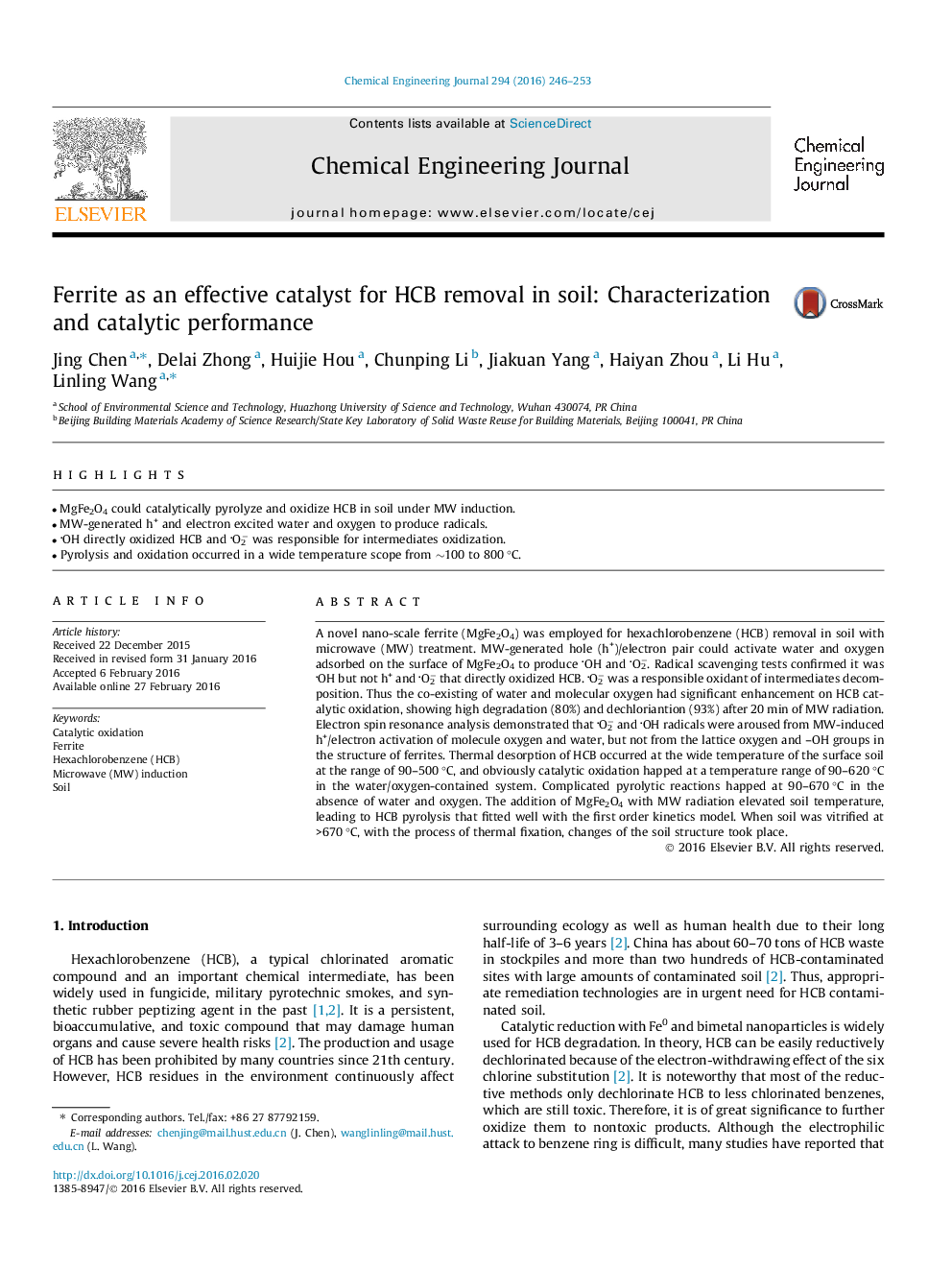| Article ID | Journal | Published Year | Pages | File Type |
|---|---|---|---|---|
| 145711 | Chemical Engineering Journal | 2016 | 8 Pages |
•MgFe2O4 could catalytically pyrolyze and oxidize HCB in soil under MW induction.•MW-generated h+ and electron excited water and oxygen to produce radicals.•OH directly oxidized HCB and O2− was responsible for intermediates oxidization.•Pyrolysis and oxidation occurred in a wide temperature scope from ∼100 to 800 °C.
A novel nano-scale ferrite (MgFe2O4) was employed for hexachlorobenzene (HCB) removal in soil with microwave (MW) treatment. MW-generated hole (h+)/electron pair could activate water and oxygen adsorbed on the surface of MgFe2O4 to produce OH and O2−. Radical scavenging tests confirmed it was OH but not h+ and O2− that directly oxidized HCB. O2− was a responsible oxidant of intermediates decomposition. Thus the co-existing of water and molecular oxygen had significant enhancement on HCB catalytic oxidation, showing high degradation (80%) and dechloriantion (93%) after 20 min of MW radiation. Electron spin resonance analysis demonstrated that O2− and OH radicals were aroused from MW-induced h+/electron activation of molecule oxygen and water, but not from the lattice oxygen and –OH groups in the structure of ferrites. Thermal desorption of HCB occurred at the wide temperature of the surface soil at the range of 90–500 °C, and obviously catalytic oxidation happed at a temperature range of 90–620 °C in the water/oxygen-contained system. Complicated pyrolytic reactions happed at 90–670 °C in the absence of water and oxygen. The addition of MgFe2O4 with MW radiation elevated soil temperature, leading to HCB pyrolysis that fitted well with the first order kinetics model. When soil was vitrified at >670 °C, with the process of thermal fixation, changes of the soil structure took place.
